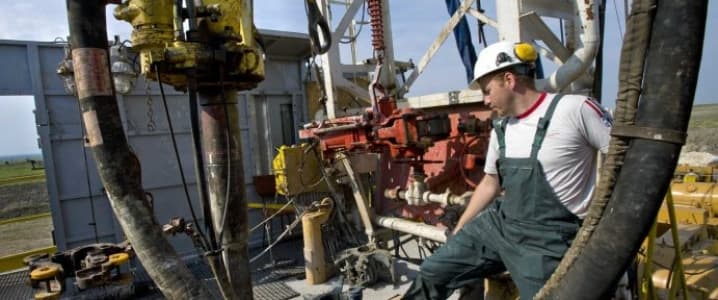Natural gas prices plunged to their lowest level since November on mild weather in the U.S., which has caused storage levels to decline at a much slower pace than expected.
Contracts for March delivery on the Nymex exchange dipped to $2.63 on February 21, down a third since December. The bearish swing has come after successive EIA reports showing a modest drawdown in gas inventory levels.
Natural gas consumption is seasonal, with spikes in demand occurring in winter months. As such, storage levels build up over the course of the year, especially in the milder months of spring and fall. Then, gas is used up in the winter. The winter of 2016 was the warmest on record, leading to a paltry drawdown in inventories. The result was a cratering of natural gas prices last year as inventories swelled following the end of winter.
This winter things were supposed to be much tighter. After all, upstream production fell last year after a decade of relentless growth. Meanwhile, the hollowing out of the coal industry has led to a corresponding uptick in natural gas consumption in the electric power sector, which is another way of saying that gas demand is rising on a structural basis. Also, LNG exports started to pick up last year, opening up another source of demand for U.S. natural gas. Related: Biggest Gasoline Glut In 27 Years Could Crash Oil Markets
And the market has indeed tightened. Record high natural gas inventories have declined this winter, falling back closer to more average levels. But they have not declined as much as gas bulls may have liked. Front-month natural gas prices fell to $2.63/MMBtu in the third week of February, down from nearly $4/MMBtu at the end of last year.

(Click to enlarge)
In fact, the winter of 2017 is turning out to be the second warmest on record, second only to last year’s winter. “It’s been kind of worst-case scenario for the bulls,” Scott Shelton, broker at ICAP PLC, told the Wall Street Journal. Other analysts agree. “Mother nature continues to be bearish, ultra-bearish,” Kyle Cooper, a consultant for Ion Energy Group, said in a WSJ interview. “The utter lack of (heating) demand is, in my opinion, 99.9 percent of the natural-gas story.”
To make matters worse, production has also turned around after prices shot back up. Moreover, oil drillers are getting back to work, deploying rigs as oil prices have stabilized in the $50s per barrel. That will lead to an uptick in gas produced in association with oil. Higher output is a bearish sign. Related: Why Is Smart Money So Long In Oil?
Another unique factor to watch is the torrential rain in California. Higher water levels in the state’s reservoirs, and from larger snowpack, will help hydroelectric dams produce more electricity this summer. The result will be softer demand for natural gas in the state, another bout of bad news for gas bulls.
On February 21, front-month gas futures fell by more than 7 percent. It is not hard to see why. The end of winter is rapidly approaching, and the northeast U.S., a key source of demand, is about to be hit with a wave of mild temperatures. New England, which is typically below freezing at this time of year, will experience spring-like conditions for the next week or so, with temperatures 10 to 20 degrees Fahrenheit above average. After that, there are only a few short weeks until spring.
Natural gas is one of the most volatile commodities, so prices will continue to swing up and down. Indeed, volatility might pick up in the coming weeks on the changeover in seasons, as well as the large volume of open interest options remaining in the market. The swings in prices have attracted a lot of bets on gas prices. As Andrew Hecht of Seeking Alpha noted this week, “[n]othing gets a volatile market like natural gas going more than an overabundance of long or short positions.” It is like a game of musical chairs, Hecht says, and “[w]hen speculative positions get too big on either side of the market, the music stops and the price often reverses and goes the other way.”
ADVERTISEMENT
But with the fundamentals no longer working in the bull’s favor, natural gas prices could remain low or even fall further in the next few months.
By Nick Cunningham of Oilprice.com
More Top Reads From Oilprice.com:
- India’s Oil Demand Is Set To Break More Records
- ‘’U.S. Oil Production To Soar By 3.5 Million Bpd Over The Next Five Years’’
- Oil Leaps Higher As OPEC Pushes For 100% Compliance


















